Not a tour today, but a day off and a very rare day trip out of Norfolk to Spurn in East Yorkshire for a spot of birding.
Siberian Accentors breed in Siberia, from the just west of the Urals east to the far NE, and migrate down to Korea and eastern China for the winter. Before this year, there had never been one seen in the UK before. There were 32 records in Europe up to 2015, of which over half had been in Finland and Sweden (though none in those countries for the last 12 & 16 years respectively). Here in the UK, it had got to the point where we thought there might be a barrier in the form of the North Sea – perhaps these accentors did not like sea crossings?
That all changed on 9th October when a Siberian Accentor was found on mainland Shetland. It was a great record, but too far away for many mainland birders and it departed quickly, after its second day. At that stage, the Shetland bird was the fourth in western Europe this year. Since then, things have really gone mad, probably reflecting a very large high pressure system over northern Europe which persisted for an unusually long time in the first half of October, bringing winds from way off to the east during the period in which they were migrating. More and more have been seen, and there have now been five different Siberian Accentors in the UK. At the time of writing, 80 have been seen in western Europe in the last two weeks and the total is increasing daily. Amazing!
One of the UK’s Siberian Accentors was found at Easington, on the Spurn peninsula in East Yorkshire late on Thursday 13th. Like the Shetland bird, it could easily have moved on quickly, particularly with bright and clear conditions overnight on Saturday and Sunday. However, it was still present on Sunday night…
We set off early in the morning on Monday, trying to avoid some of the worst of the traffic. At around 7.20am, we got the news we were hoping for – the Spurn Siberian Accentor was still present, the quest was on. After negotiating the late rush hour traffic around Hull, we got to Easington at 10am and walked the short distance to where the bird has been feeding. A small number of birders were gathered and within seconds we were watching a Siberian Accentor – a bird none of us had seen anywhere in the world and a near mythical species for me when I was growing up. Amazing!
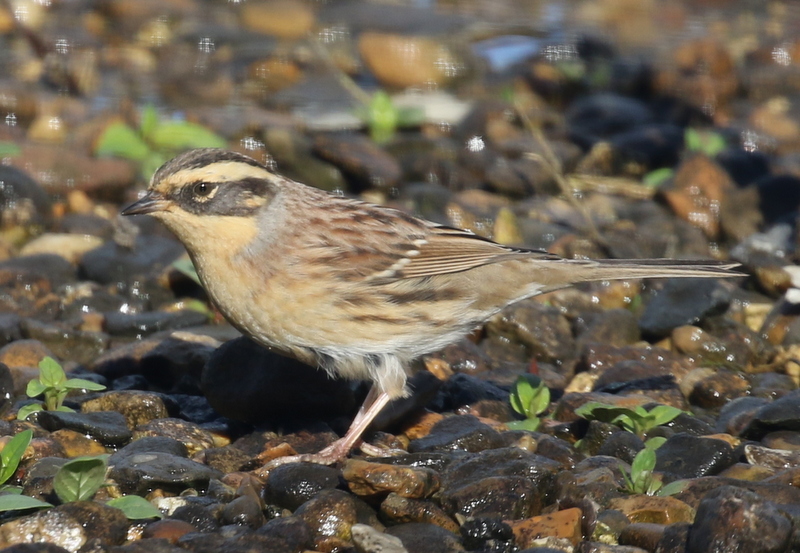
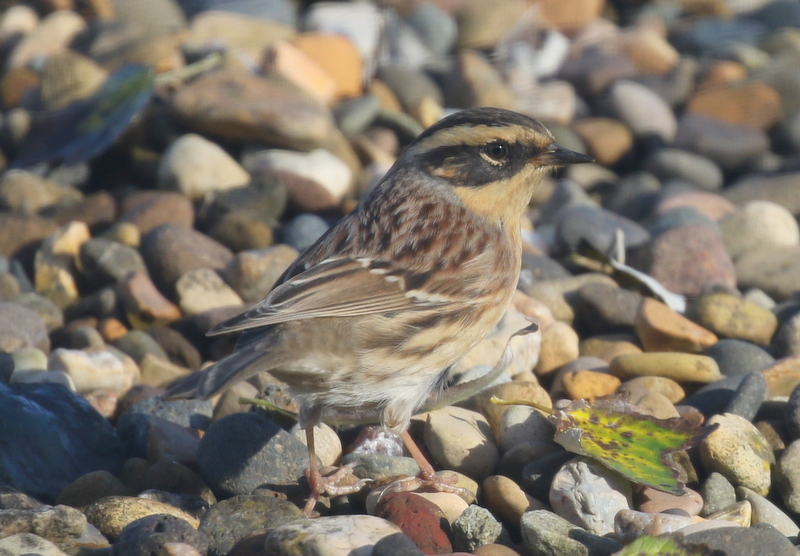
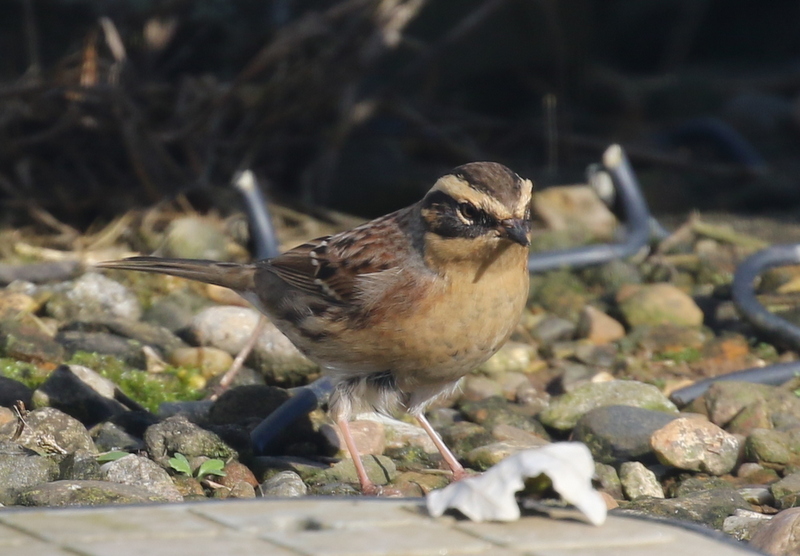
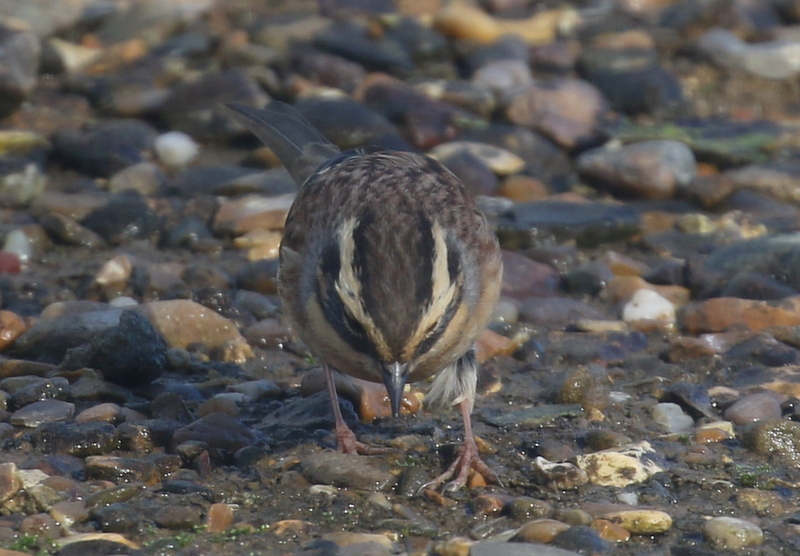
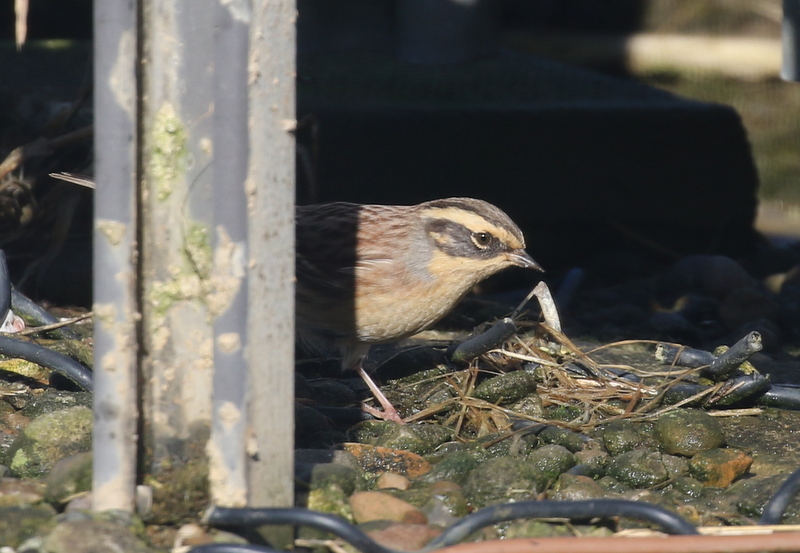 Siberian Accentor – the second ever to be recorded in UK
Siberian Accentor – the second ever to be recorded in UK
After we had had our first session watching the Siberian Accentor, news came through that an Isabelline Wheatear had been found in a field just a short walk away. Breeding from southern Russia across to Mongolia, down to Turkey in the south west, and wintering in Africa and across to NW India, they are rare visitors here. Though with 34 records in UK up to the end of 2015, they are not as rare as the accentor. Still it would be a great bird to see.
We walked over to where the Isabelline Wheatear had been and a small crowd was already gathered. The bird was there, feeding out in a cultivated field, with a regular (Northern) Wheatear nearby for comparison. Isabelline Wheatear can be a tricky bird to identify, with some pale Northern Wheatears looking confusingly similar at first glance. This bird was not the brightest Isabelline Wheatear we have seen, which made it all the more interesting to see. There are some key identification criteria for this species, including the much wider black terminal band on the spread tail, the colour and pattern of the wing coverts and the spacing of the primary tips and all fitted Isabelline Wheatear. A real bonus bird for our visit here.
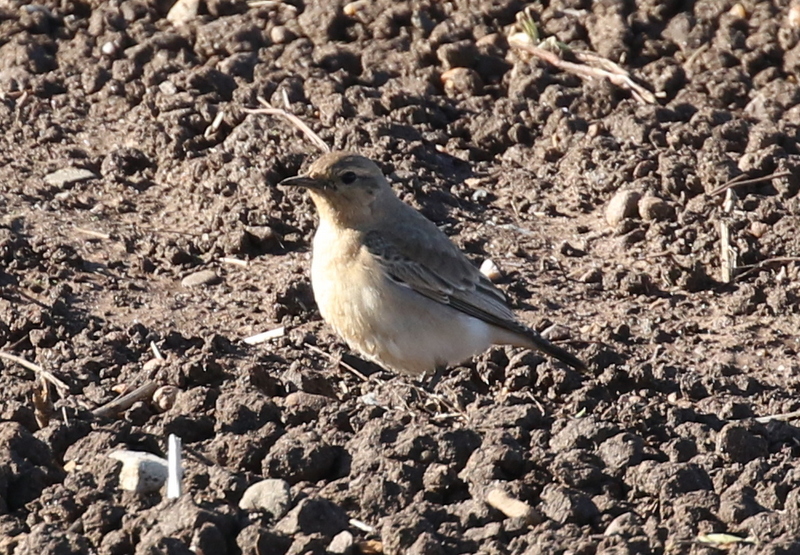 Isabelline Wheatear – a large, pale wheatear
Isabelline Wheatear – a large, pale wheatear
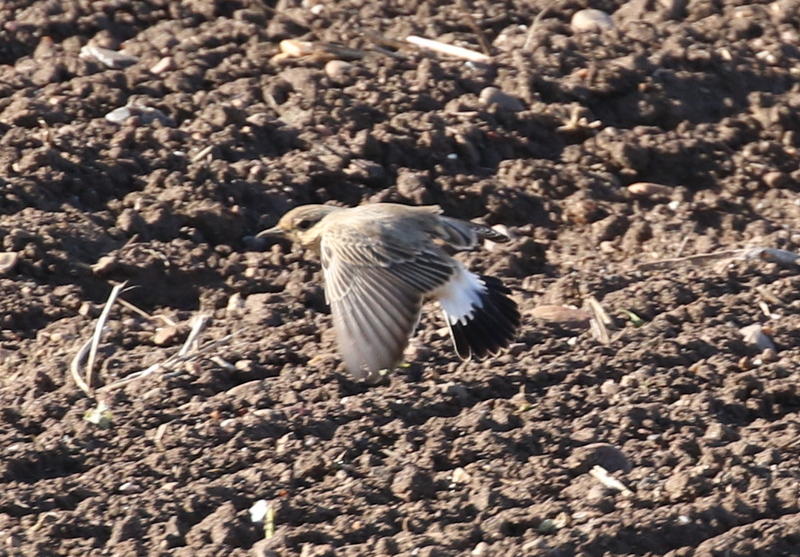 Isabelline Wheatear – note the very broad black terminal band on the tail
Isabelline Wheatear – note the very broad black terminal band on the tail
We had just enjoyed a very good weekend in Norfolk, with lots of Siberian waifs and strays being blown in on the easterly winds along with large numbers of commoner migrants, but by all accounts Spurn had also enjoyed a huge fall of birds. After two clear nights, a lot of those had moved on but there were still plenty of other birds for us to see. After a second session back watching the Siberian Accentor it was nice to have an opportunity to explore the rest of the Spurn area for the remainder of the day.
There has been a large arrival of Tundra Bean Geese in recent days and on our way between the Siberian Accentor and the Isabelline Wheatear we had noticed a flock of around 10 in a stubble field beside the road. On our way back, we stopped for a proper look. They had obviously been feeding in the wet field, as their bills were caked in mud, mostly obscuring the distinctive orange bill band. However, the structure of the bill on a Tundra Bean Geese is distinctive, very different from the bill of a Pink-footed Goose. Through the scope we could just about make out a little orange on the bills of a couple of them.
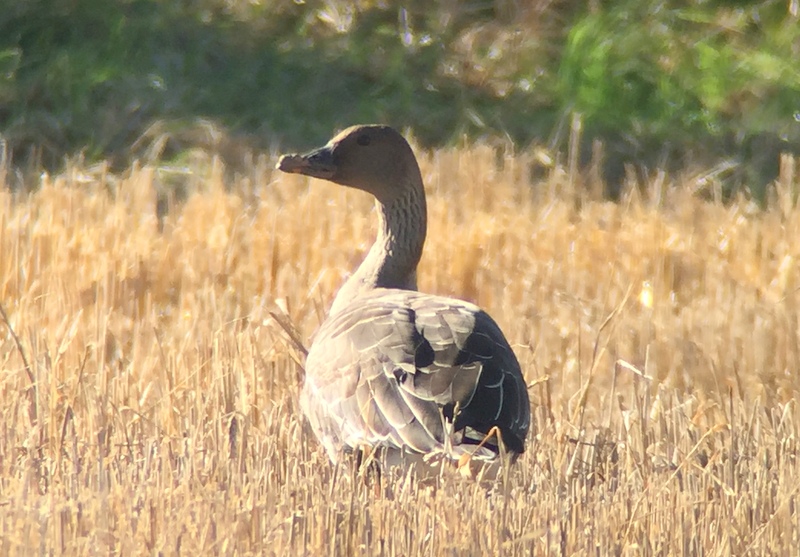 Tundra Bean Goose – 1 of around 10 in a stubble field near Easington
Tundra Bean Goose – 1 of around 10 in a stubble field near Easington
A brief stop at Kilnsea failed to locate the Pallas’s Warbler in the bushes in the car park of the Crown & Anchor, but it was rather windy while we were there. A Glossy Ibis had dropped in to Kilnsea Wetlands earlier but there was no sign of it as we passed. However, when we parked up at Canal Bank, we were told it was now out on the saltmarsh on the edge of the Humber Estuary but out of view. Shortly after we got out of the car, it flew up and circled round, its glossy wings shining green in the sunshine, before dropping down again. We were fortunate to catch it, as a few minutes later, the Glossy Ibis flew off again and continued on its way south, crossing the Humber from Spurn Point to Lincolnshire.
There was no sign of any Jack Snipe from the hide at Canal Scrape, although a Water Rail stopped to have a bathe on the edge of the reeds. We didn’t stop long here though, as time was pressing and we wanted to walk out all the way to Spurn Point, three miles away. Ideally we would have had more time to explore the area, but it was already early afternoon and we were told we should be back at the Warren by around 5pm to avoid being stranded, as the high tide later today could cover the breach in the peninsula.
There were lots of areas of scrub which were crying out to be explored as we walked down towards the Point, but we had to avoid the temptation and crack on to the end. Even just along the ‘road’, there were still good numbers of Robins and thrushes, especially Redwing, and a few Goldcrests. Some of the Robins were particularly tame!
 Robin – a very tame one (photo credit Luke Nash)
Robin – a very tame one (photo credit Luke Nash)
By the time we got to the Point, we knew we didn’t have much time. On the walk down, we were told that there were still a couple of Dusky Warblers in the bushes and helpfully a couple of locals pointed us in the right direction. They can be particularly skulking, but with the wind having dropped, one of the Dusky Warblers decided to perform amazingly for us in the afternoon sunshine. Although it did go missing at times, we watched it flycatching in the bushes and hopping around on the grass! Interestingly, it was not the best marked Dusky Warbler, with a rather subdued pale supercilium. However, it called fairly regularly which helped us to locate it.

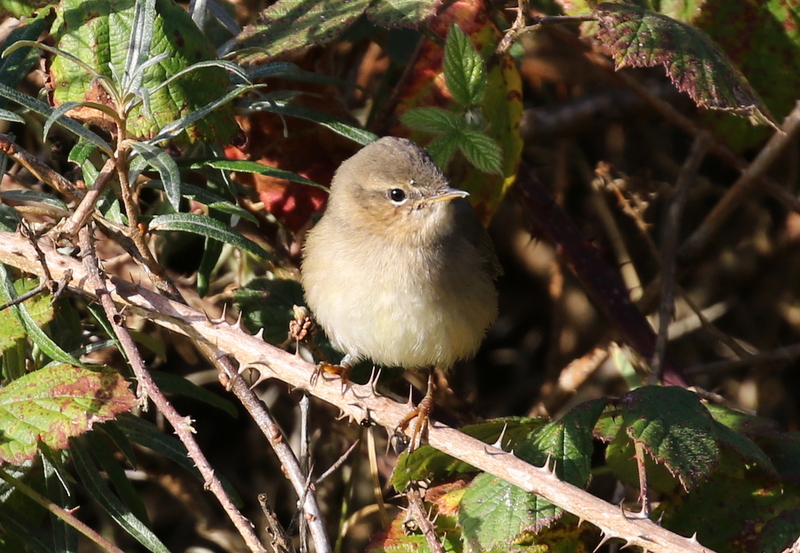 Dusky Warbler – a very showy bird at Spurn Point
Dusky Warbler – a very showy bird at Spurn Point
In order to get back over the breach in the time we were told, it was going to be a brisk walk back. We had a quick look on the way for the Olive-backed Pipit which had been on the Point earlier, but there was no immediate sign so we didn’t linger. A brief and light squally shower blew through as we strode over the narrows, though thankfully the wind was now at our backs. It did also create the most stunning double rainbow, the inner one with amazingly saturated colours, which hung just a short distance ahead of us on our way.
There was still just enough time to stop at Kilnsea in the last of the afternoon light before we had to head for home. We found a few people in the churchyard looking for the Pallas’s Warbler, but we were told it hadn’t been seen for over an hour. The wind had dropped a little and there was now some late sun on the trees, after the rain had passed through, but it was still a bit cool. A Chiffchaff promised something more exciting until it came out from the leaves to where we could see it.
There appeared to be something else in the back of the trees, so we walked around to the gate the other side, where it was more sheltered from the wind even if in the shade. Scanning the trees this side, we found another Chiffchaff and a couple of Goldcrests in the sycamores before we got a glimpse of the Pallas’s Warbler among the thicker, greener leaves of an ash tree right above us. We called the others over and had lovely views of it just above our heads – our favourite ‘seven-striped sprite’. It was a great way to end our brief visit to Spurn, watching the Pallas’s Warbler flitting around in the tree.
Then with the light starting to fade, it was back in the car for the long journey home. What an amazing day!
















